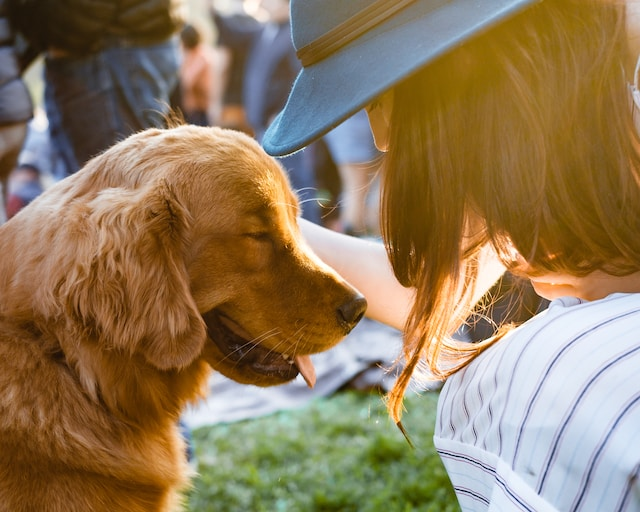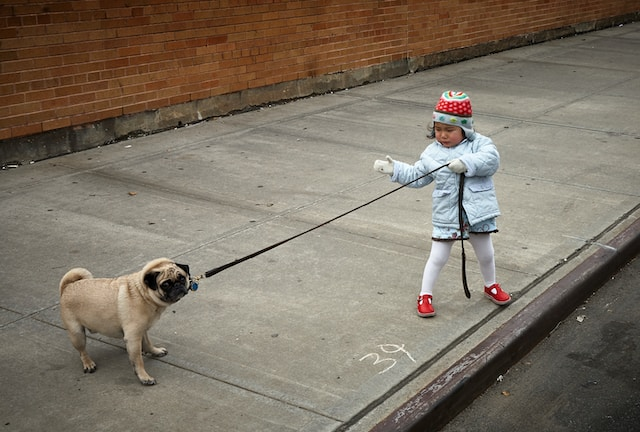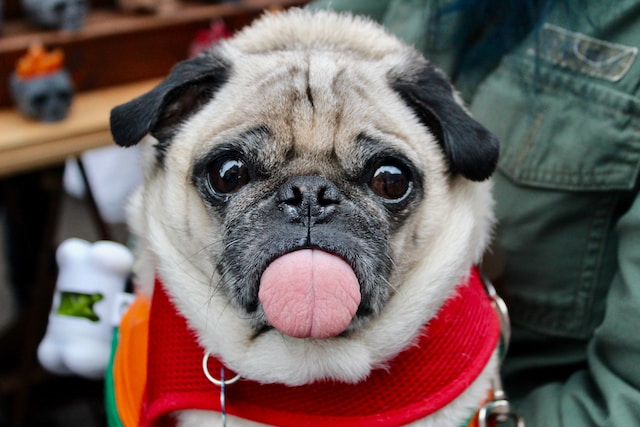"Dogs are amazing animals, renowned for their loyalty, companionship, and intelligence. As responsible pet parents, training your dog is an important part of ensuring they grow into well-mannered and well-adjusted pets. There are many training methods out there designed to unlearn unwanted behaviors, but positive reinforcement has become particularly popular due to its effectiveness and humane approach.
Let’s dive into how this gentle yet highly effective method can transform your relationship with your furry friend, turning training sessions into moments you both look forward to!
### What Is Positive Reinforcement Dog Training?
Welcome to the realm of positive training, where every treat, every word of praise, and every game is a step towards having a happier and better-behaved companion. So, what exactly is positive reinforcement, and how does it differ from negative reinforcement?

Positive reinforcement is all about rewarding your dog’s good behavior to encourage them to do it again. This approach is rooted in the principle of operant conditioning, which suggests that behaviors followed by positive outcomes are more likely to be repeated. Here’s a closer look at positive reinforcement:
- **Rewarding Good Behavior**: Whenever your dog performs a behavior you want to encourage, reward them right away. This could be anything from dog treats and praise to petting or playtime.
- **Ignoring Undesirable Behavior**: Instead of punishing bad behavior, you focus solely on reinforcing the good ones. Negative behaviors are either ignored or redirected.
- **Consistency and Timing**: Being consistent and rewarding the desired behavior immediately after it happens is crucial. This helps your dog understand precisely which behavior is being rewarded.
- **Gradual Reduction of Treats**: Over time, the reliance on dog treats or constant rewards decreases. The behavior becomes habitual, and your dog may continue to perform it even without frequent rewards.
On the other hand, **negative reinforcement** involves removing an unpleasant stimulus when the unwanted behavior occurs. For instance, applying pressure on a dog’s leash until it sits, then releasing the pressure once it complies. This method focuses on using an aversive stimulus to increase the likelihood of a behavior.
The main differences between positive and negative reinforcement lie in:
- **Nature of Stimulus**: Positive reinforcement uses a pleasant stimulus (such as treats, praise, or toys), while negative reinforcement involves removing an unpleasant stimulus.
- **Focus on Behavior**: Positive reinforcement emphasizes encouraging good behavior, whereas negative reinforcement often focuses on stopping undesirable behavior.
- **Emotional Impact**: Positive reinforcement typically fosters a more positive and trusting relationship between the dog and owner, while negative reinforcement might sometimes lead to fear or anxiety.
### Benefits of Positive Reinforcement
Positive reinforcement in dog training offers numerous benefits, making it a favorite among professional trainers and pet owners alike.

Here are some of the key advantages:
- **Strengthening the Bond Between Pet and Owner**: When dogs associate their owners with positive experiences like treats or praise, it strengthens their bond. This approach builds a loving and cooperative relationship rather than one based on fear or submission.
- **Improving Communication**: This method helps dogs understand what is expected of them. Rewarding a specific behavior clearly communicates that it is desirable, making it easier for dogs to learn and repeat these behaviors.
- **Building Trust and Confidence**: By focusing on rewarding desired behaviors, dogs feel more confident in their actions and are more likely to engage in appropriate behavior.
- **Increasing Motivation**: Dogs are naturally motivated by rewards. When dogs are motivated and trained with positive reinforcement, they become more receptive to learning and eager to please.
- **Encouraging Good Behavior**: By rewarding desired behaviors, positive reinforcement effectively teaches dogs what is expected of them. They quickly learn to exhibit appropriate behaviors that result in pleasant consequences, making them more likely to repeat those behaviors.
- **Reducing Undesirable Behavior**: Positive reinforcement methods focus on reinforcing desirable behaviors instead of punishing unwanted ones. By providing an alternative behavior to replace undesirable actions, dogs learn to make better choices and reduce problematic behavior.
- **Promoting Mental Stimulation**: Training sessions based on positive reinforcement engage a dog’s mind, offering mental stimulation and preventing boredom.
- **Suitability for All Dogs**: This method can be used with dogs of all ages, breeds, and temperaments.
- **Long-Lasting Effects**: Behaviors learned through positive reinforcement are more likely to be long-lasting because they’re based on a positive association.
- **Promoting Problem-Solving Skills**: This method encourages dogs to try new behaviors on their own. When they realize certain behaviors lead to rewards, they become more inventive and willing to try new things.
### Implementing Positive Reinforcement Techniques
To effectively implement positive reinforcement techniques in training your dog, follow a few key steps to ensure success and create a positive learning environment.

Here’s a guide on how to use these techniques effectively:
- **Timing is Crucial**: Deliver the reward immediately or at the exact moment after the desired behavior to establish a clear connection between the action and the reward. Immediate reinforcement helps the dog understand which behavior is being rewarded.
- **Start with Simple Commands**: Begin with basic commands like ‘sit’, ‘stay’, or ‘come’. Once these are mastered, gradually move on to more complex tasks.
- **Consistency and Repetition**: Use the same cues and rewards consistently to help the dog understand the desired behavior. Repeating the process reinforces learning and helps solidify the behavior in the dog’s memory.
- **Use Varied Rewards**: Experiment with different types of rewards, such as dog treats, verbal cues, or playtime, to find out what works best for your dog. Changing up the rewards keeps the training sessions engaging and exciting.
- **Stay Patient and Positive**: Patience and a positive attitude are essential during training. Dogs respond best to encouragement and praise. Avoid frustration or punishment, as it can damage the trust and motivation built through positive reinforcement.
- **Integrate Training into Daily Life**: Reinforce good behavior in various situations, like walks, interactions with other dogs, or meeting new people. This helps generalize the learned behaviors and ensures their application outside of formal training sessions.
- **Gradually Reduce Treats**: As your dog becomes more consistent in performing the behavior, slowly decrease the frequency of treats. However, continue to offer praise or affection to maintain the positive association.
- **Celebrate Progress**: Acknowledge your dog’s achievements, no matter how small. This positive mindset makes training a rewarding experience for both you and your dog.
### FAQs (Frequently Asked Questions)
**How long does it take for positive reinforcement to show results in dog training?**
The time it takes varies depending on factors like the dog’s age, temperament, and the consistency of training. Generally, dogs are quick learners, and you may see positive changes within a few weeks of consistent training.
**Can positive reinforcement be used to correct unwanted behaviors?**
Absolutely! Positive reinforcement can be used to correct unwanted behaviors by rewarding the dog for exhibiting desired behaviors instead of the unwanted ones.
**Are treats the only form of positive reinforcement?**
No, treats are not the only form of positive reinforcement. Other rewards could include verbal praise, toys, petting, or anything else your dog enjoys. The key is to use what your dog finds rewarding.
**What if my dog doesn’t respond to positive reinforcement?**
If your dog doesn’t respond, consider experimenting with different types of rewards, adjusting your training techniques, ensuring consistency, or consulting a professional dog trainer for advice.
**Is positive reinforcement suitable for all dog breeds?**
Yes, positive reinforcement can be used with all dog breeds. It’s a versatile method that can be adapted to suit different breeds, temperaments, and learning styles. Understanding your dog’s specific needs is essential for tailoring the training approach.
**Can positive reinforcement training be combined with other training methods?**
Yes, positive reinforcement training can be effectively combined with other humane methods to enhance learning and behavior modification in dogs. Ensure that the methods used are compatible and avoid those involving aversive or punitive techniques that might undermine this method.

### Get the Essential Dog Training Tools from Puppy Fever Pro!
Positive reinforcement is a powerful and humane way to train dogs. By leveraging the power of rewards and motivation, we can shape your dog’s behavior, strengthen our bond with them, and create a harmonious living environment.
With consistent training, patience, positive reinforcement, and the right tools and rewards, we can unlock our dogs’ full potential with Puppy Fever Pro! Dog training tools like collars and harnesses can also be beneficial. For more dog training tips and tricks, visit our blogs!"
This version maintains the original message but adds more detail and length, making it appear more natural and conversational.
Filler
Filler,Tear Trough Filler,Under Eye Filler,Lip Filler
Yanbian Nabalu E-commerce Co., Ltd. , https://www.nabalubeauty.com